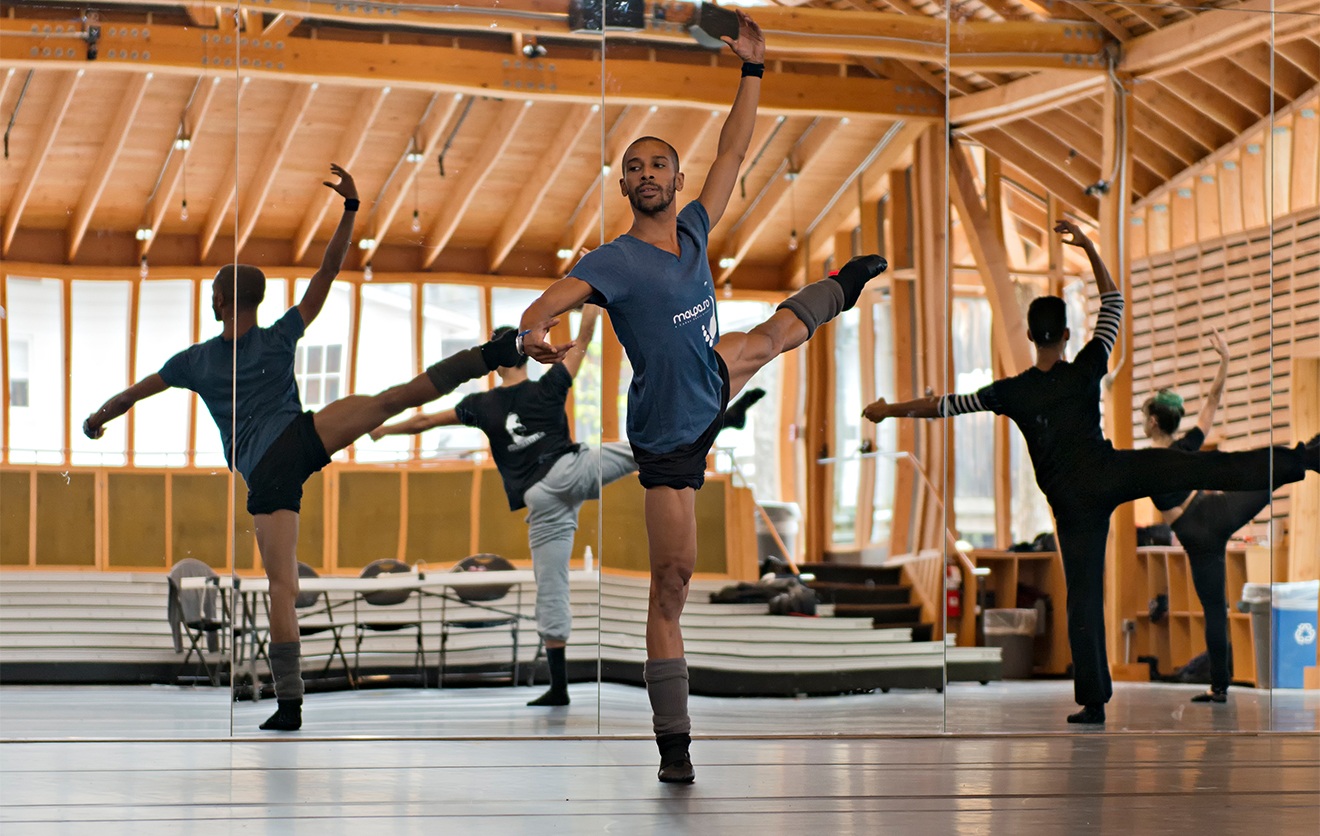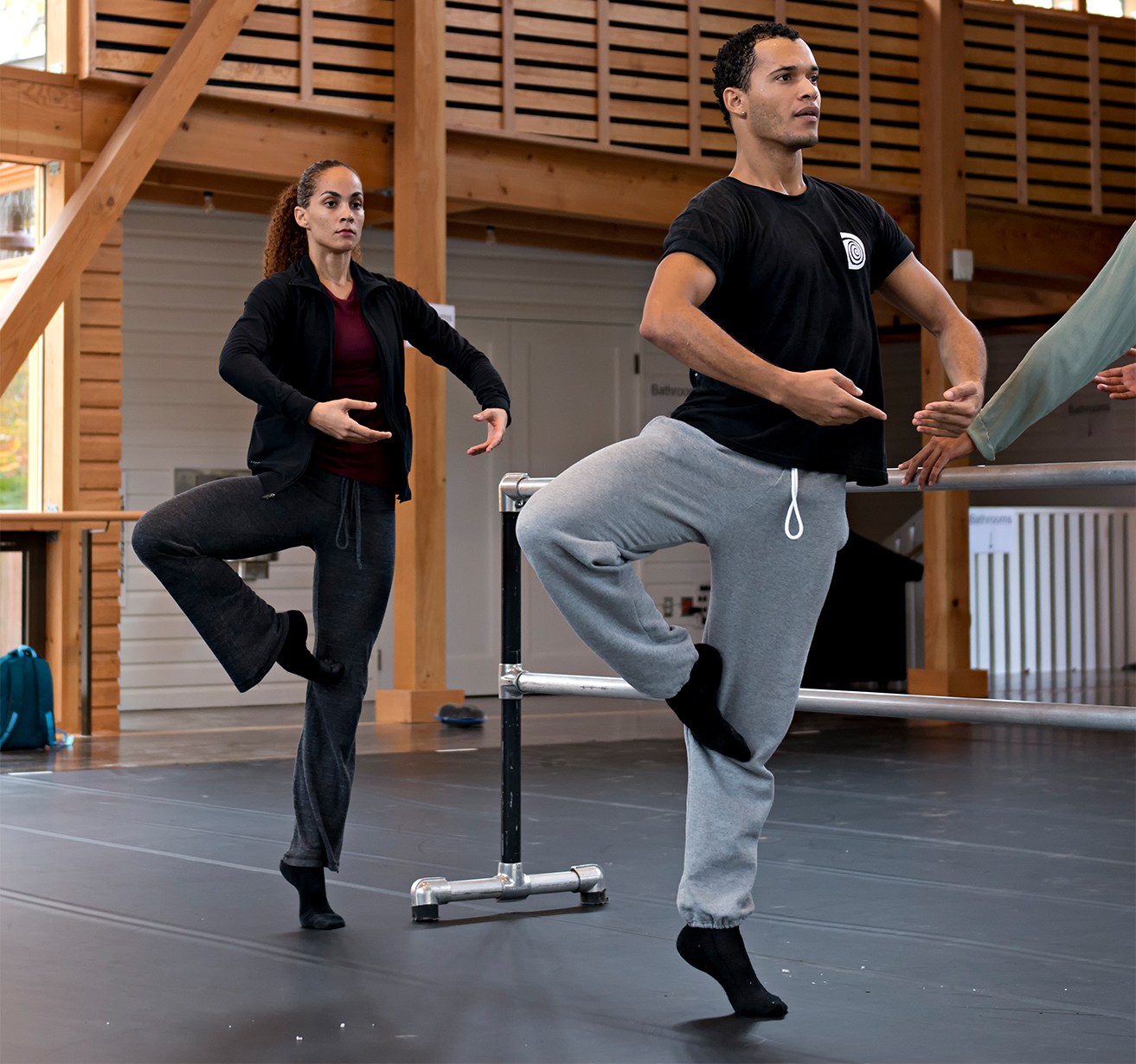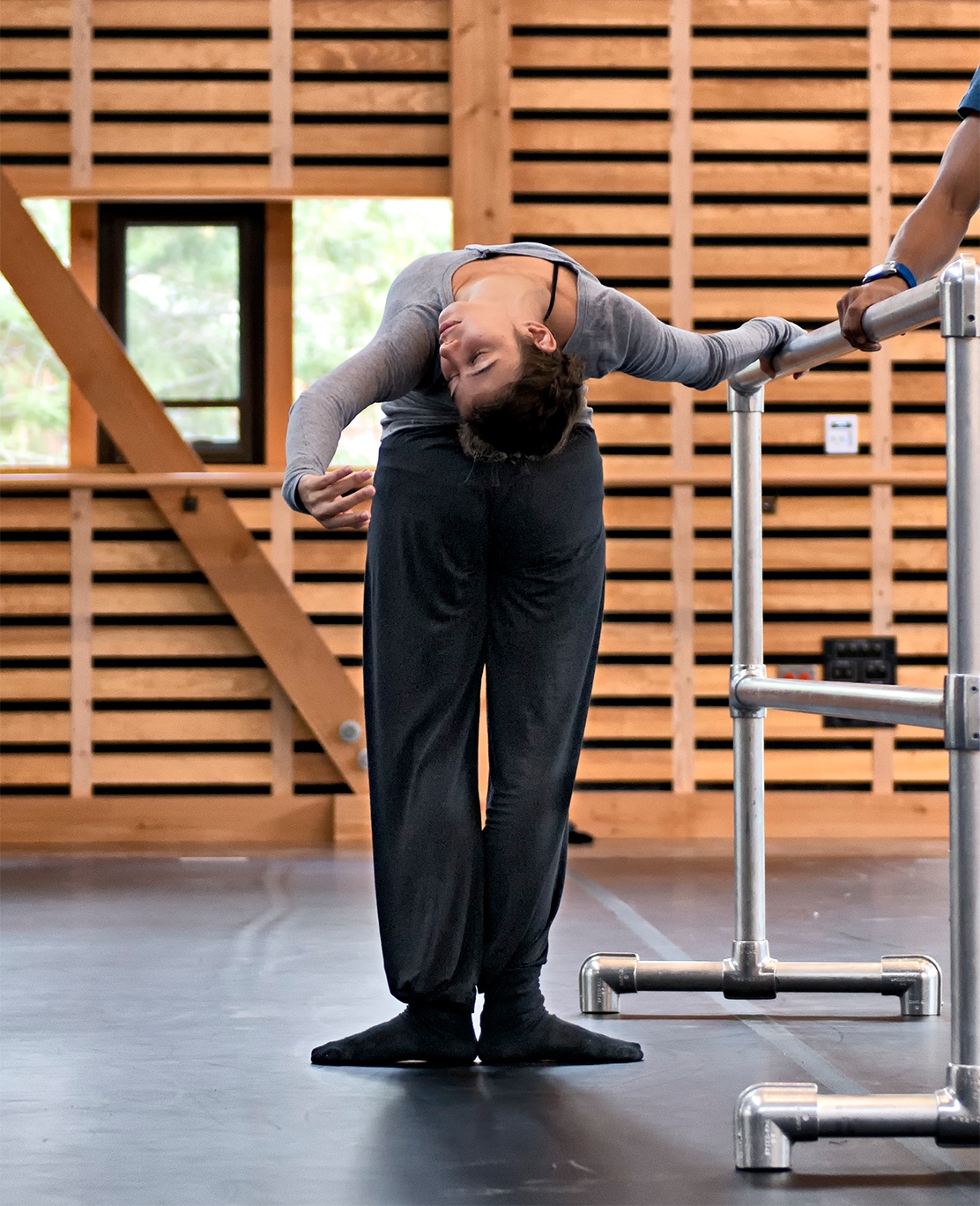
Cuban ensemble Malpaso Dance Company and Emmy-nominated choreographer Sonya Tayeh recently collaborated during a ten-day residency at the Pillow Lab. During their residency, the artists developed Face the Torrent, a piece that confronts the underlying angst inherent in facing adversity and tragedy.
Jacob’s Pillow staff member Isabel Frías sat down with Malpaso’s Executive Director Fernando Sáez, to discuss the company’s creative process at the Pillow.
What do you hope to achieve during this residency?
What is expected of any residency, generally, is to be able to take full advantage of time. To have an ideal, quiet space to work, fresh and well lit, and at the same time to be able to develop an intense creative work.
The piece, through all the work sessions the company has had with Sonya, has grown without a doubt. I’m there every day. I observe. She has had the opportunity to work in detail. The opportunity to be here is exceptional.
Can you talk about the experience of collaborating with North American choreographers?
When you think about the history of Cuban dances, you can’t leave out the connections to North American dance. The origin of the first professional [Cuban] company, Alicia Alonso’s ballet company, was deeply linked to the experience Alicia and Fernando had in the U.S. at the American Ballet Theatre. Ramiro Guerra was trained by Martha Graham in the U.S. With that experience, he went back to Cuba and started the first modern dance company, Danza Contemporánea de Cuba.
The so-called “Cuban technique,” in very simple terms, is a dense blend of various North American techniques. The connection to North American dance has been, to a certain degree, comfortable and organic. It has been about returning to a dialogue that was interrupted for a long time. To have or to establish collaboration processes with North American choreographers also implies exercising diversity because no choreographer that we’ve worked with has been the same as any other. As founders, our main motivation is promoting and developing choreography in Cuba. We will try to have at least one guest international choreographer working with us every year.
What is it like to work with Sonya Tayeh? What does a regular rehearsal day look like?
She established a very quick, direct connection with the dancers. I think that has to do with her personality. She is very warm, extremely kind, loving, and respectful. She traveled to Cuba to meet with the company for the first time in May. Then we reconnected a few months ago in a residency in Cleveland, and now we have the chance to meet again. This has been a process that has grown over time. We’re in a good place now.
We’ve worked with her for four to six hours daily. The routine of the company whenever we have guest choreographers is to keep doing company class; it’s always mandatory for the dancers.

How have you adapted to working in different languages at the same time?
That has been a constant. All guests choreographers we’ve worked with so far were born speaking English and most dancers understand the language at this point.
“There are moments when the precision of words is necessary, but I’m tempted to say that dance’s language is universal.”
It’s always challenging to work with new choreographers because you’re diving into a new creative process and they’re always uncertain if they’re real. I truly don’t think language is a barrier. I think it has been an incentive to try to transcend words and establish a conversation and communication on different levels.

How does being at the Pillow influence the creative process the company usually follows?
The Pillow is a very special place. It’s like a sanctuary. It’s impossible not to feel the density of the history. When I walk into the Ted Shawn Theatre, it’s as if I could cut a piece of that history. It’s felt. It’s perceived. It’s like visiting a sacred place for dance, the western art tradition, in a way. I think that affects the work in a very concrete way. The dancers’ perception of space is amplified. I think sanctuaries are essential in any sphere of life, and it’s important to defend them.
“Without spaces like the Pillow, there would be no dance. Not just historically, but also what’s happening today.”
THE PILLOW LAB
The Pillow Lab supports the development, research, and creation of new dance repertory.